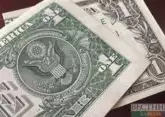Today's trading on the Moscow stock exchange resulted a decline in the dollar and the euro exchange rates against the ruble.
As of 10:30 (MSK), the dollar exchange rate fell below the level of 56 rubles - 55.85 rubles, and as of 13:00 it reached 55.9 rubles.
At the moment of the opening of the stock exchange the euro traded at 68.9 rubles, in 10:20 it reached a low of 68.81 rubles. Currently, the euro traded at 69.05 rubles.
The advisor on macroeconomics to the CEO of the 'Opening-Broker' brokerage house, economist Sergey Hestanov, speaking with Vestnik Kavkaza, noted that first of all, the current strengthening of the ruble is explained by the increase in Russia's rating by international rating agencies to the investment level. "There is almost always a strengthening inthe national currency, if the rating is risen. But it is unclear how long it will last, since even a rate of 56-57 rubles for $1 puts pressure on Russian exporters, which means we should expect that by the end of March the Central Bank and the Ministry of Finance will start buying currency to replenish international reserves in order to weaken the ruble," he said, adding that it would return the ruble to the position of mid-February.
The professor at the department of the stock market and investments at the Higher School of Economics, Alexander Abramov, agreed with Hestanov. "Recognition of Russia's investment ratings has led to short-term investments from international investors. But the effect will last for only a few days, then the markets will normalize," he stressed.
In general, according to Alexander Abramov, in the near future the ruble will demonstrate the same stability as it did last year. "The ruble has been in the range of 56-57 rubles per dollar for a long time. Of course, certain events that may lead to a certain weakening of the ruble are possible: positive - as a decline in the key rate by not 0.25%, but by 2%, which would lead to increased lending, and negative ones like falling oil prices. Remember, every 7-8 years the ruble is devalued, and now we are just in the middle of such a cycle, therefore, the ruble will definitely be strong in the short term," the economist concluded.










